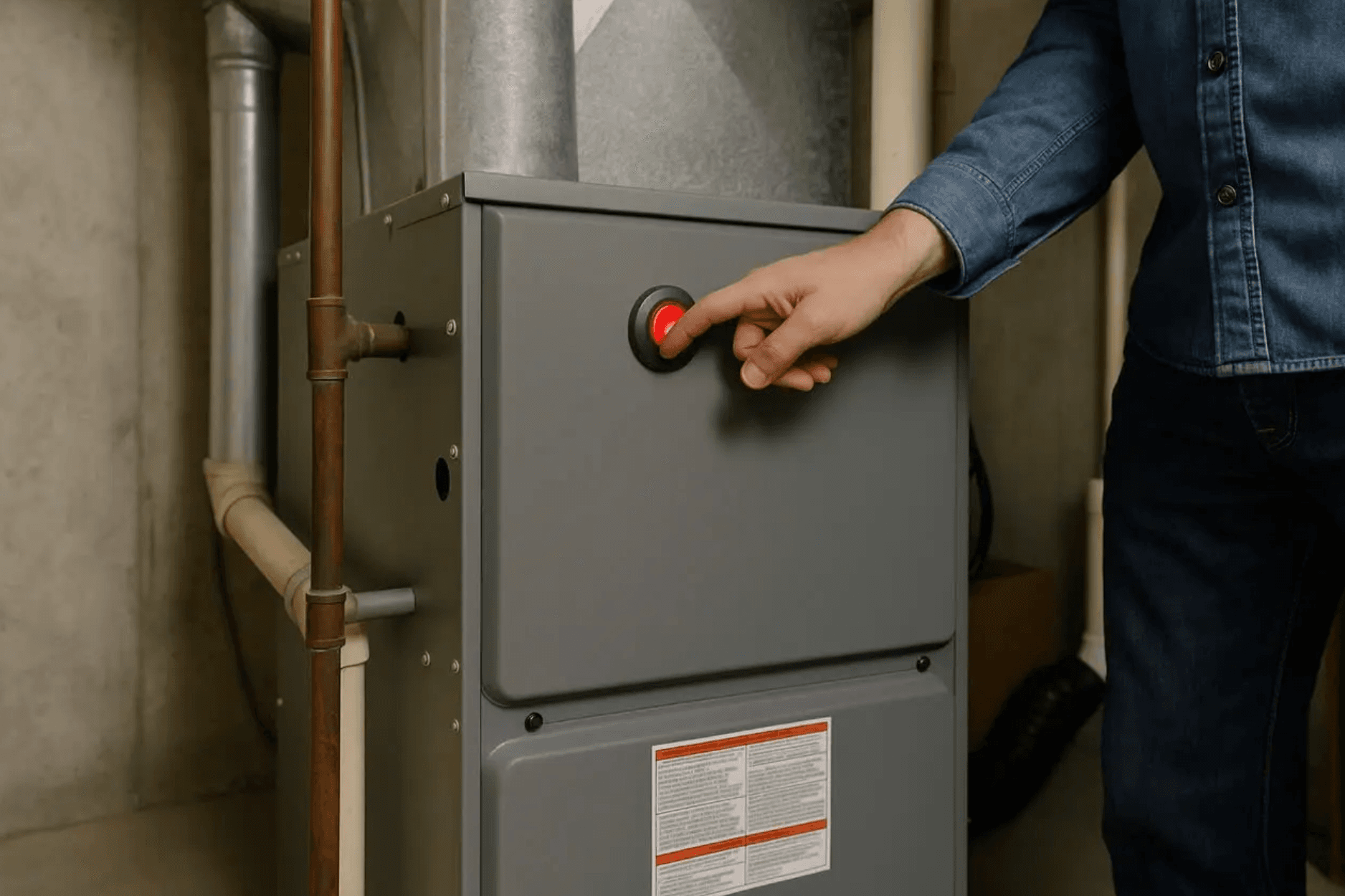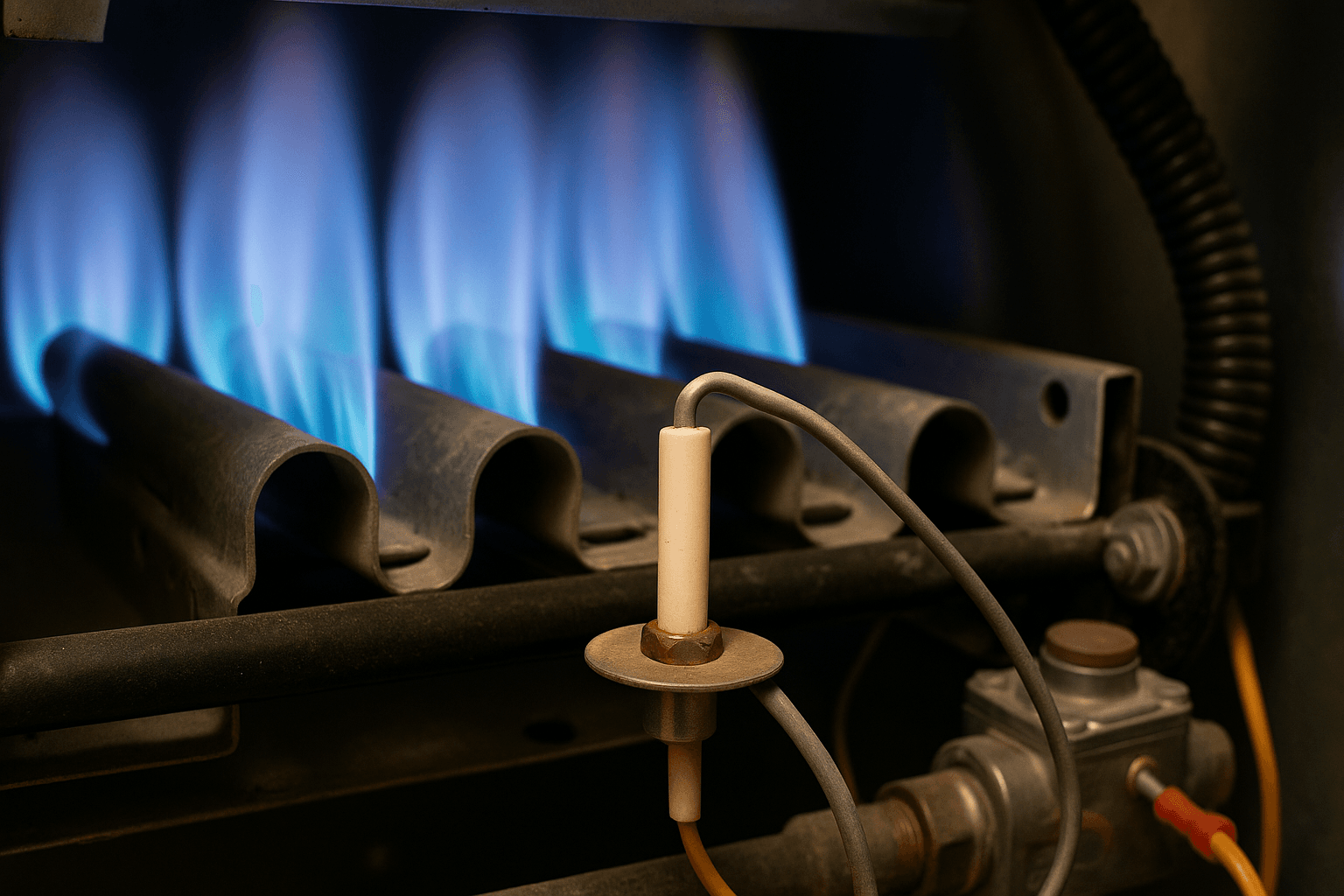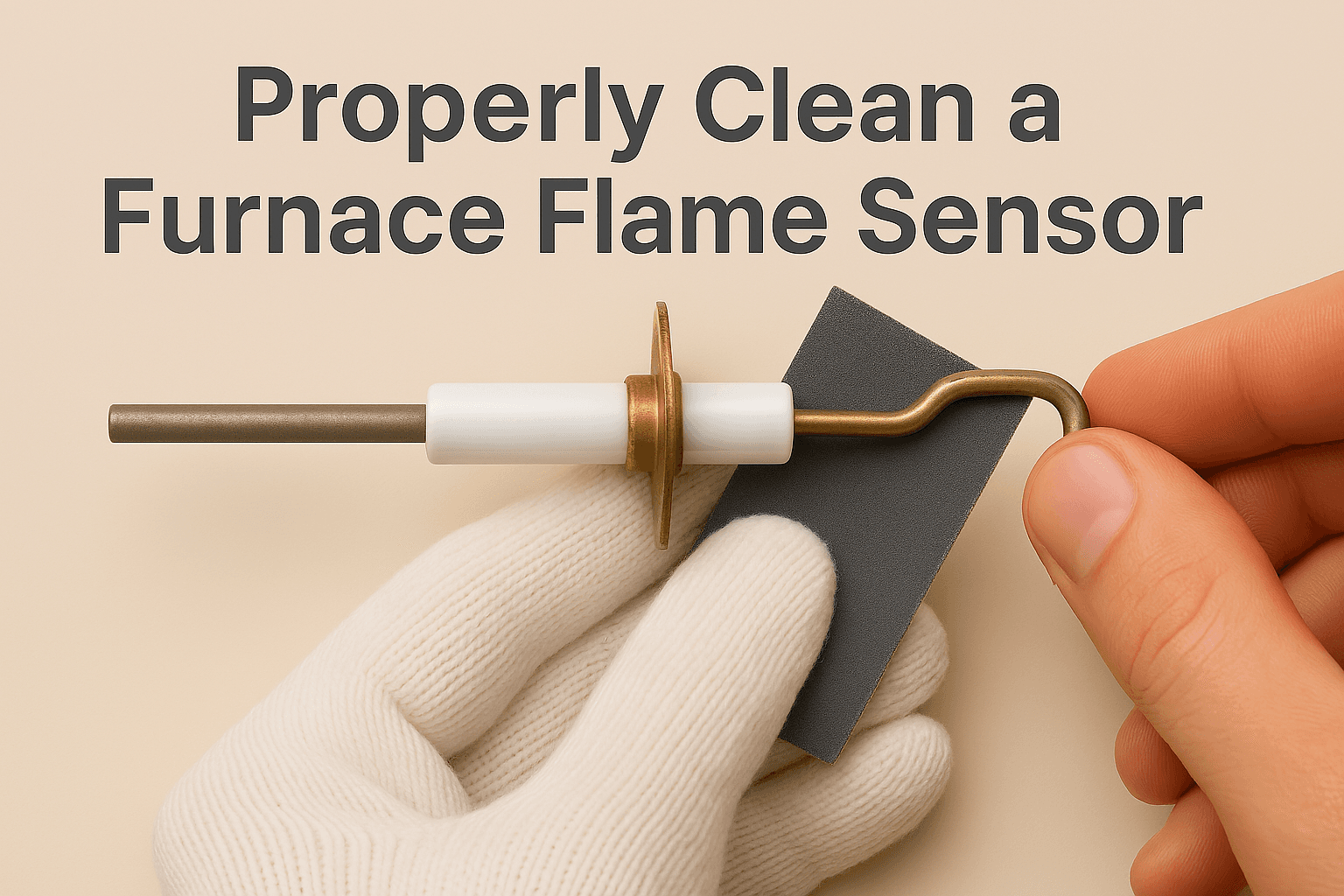How-To Guides
Where is the Location of the Flame Sensor on a Furnace?
AZparts Team
Updated on November 1, 2025
6 min read
The flame sensor is a crucial component in a furnace system, ensuring safety and efficient operation by detecting the presence of a flame. Knowing the exact location of the flame sensor in your furnace not only makes it easier to inspect and maintain but also allows for timely troubleshooting of related issues. In this article, let’s explore with AZParts where the flame sensor is located in a furnace, as well as how to identify and properly maintain this device to keep your furnace running smoothly and safely.
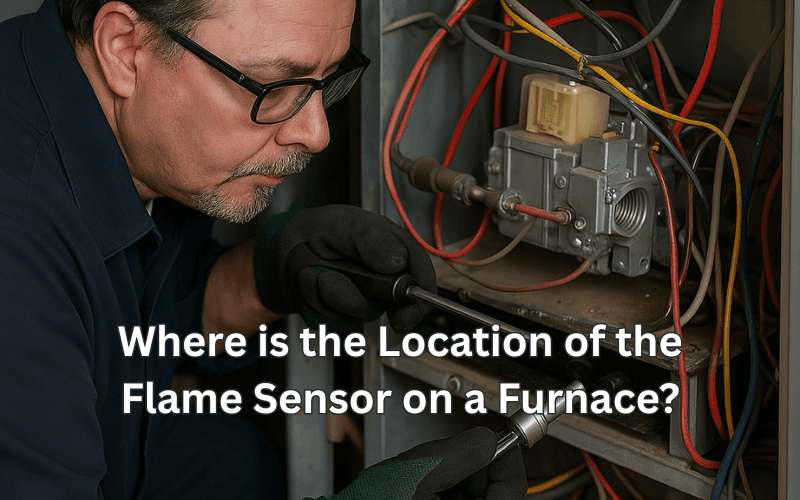
1. What is a Furnace Flame Sensor?
The flame sensor is a critical safety component in gas furnaces. Its primary function is to detect whether a flame is present after the ignition system activates. If no flame is detected, the sensor sends a signal to the control board to shut off the gas supply, preventing dangerous gas leaks that could lead to fires, explosions, or toxic gas buildup.
When the furnace starts, the gas valve opens, and the ignition system creates a spark to ignite the gas. The flame sensor detects the presence of the flame through a small ionization current generated when the flame comes into contact with the sensor tip. If the sensor fails to detect a flame within a few seconds, the system automatically shuts off the gas for safety.
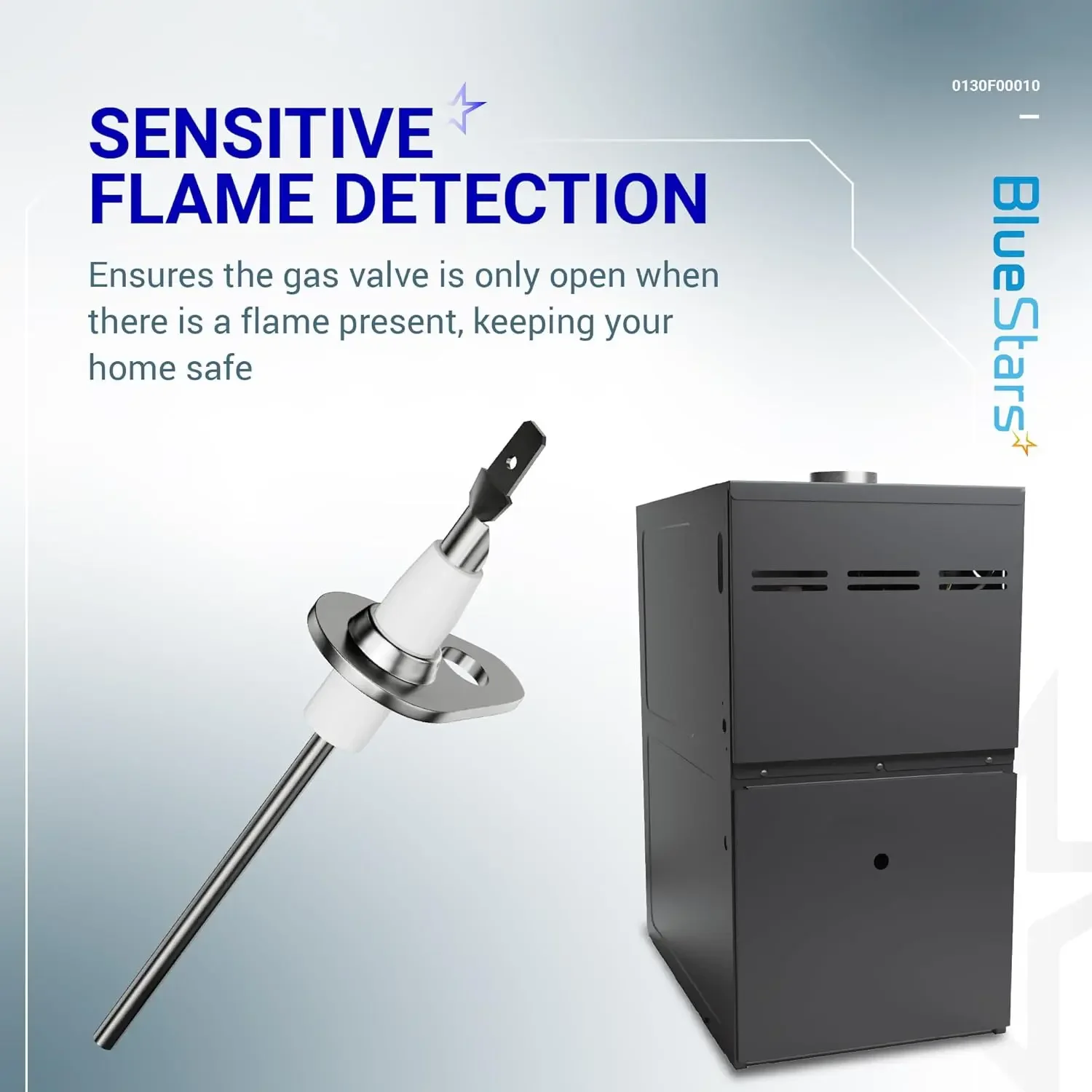
The flame sensor is a critical safety component in gas furnaces (Source: AZParts).
2. Where is the Location of the Flame Sensor on a Furnace?
The flame sensor location on furnace systems is typically near the burner assembly, where the flame is produced. It usually appears as a small, thin metal rod mounted on a bracket so the sensor tip sits directly in the flame or just beside the ignitor. To find the furnace flame sensor location:
- Turn off power and gas
- Open the furnace access panel
- Locate the burner area
- Look for a single wire leading from a metal rod back to the control board.
If you can’t spot it, consult the manufacturer’s diagram or service manual for the exact position. Always use a replacement that matches your model’s specifications to ensure safe operation.
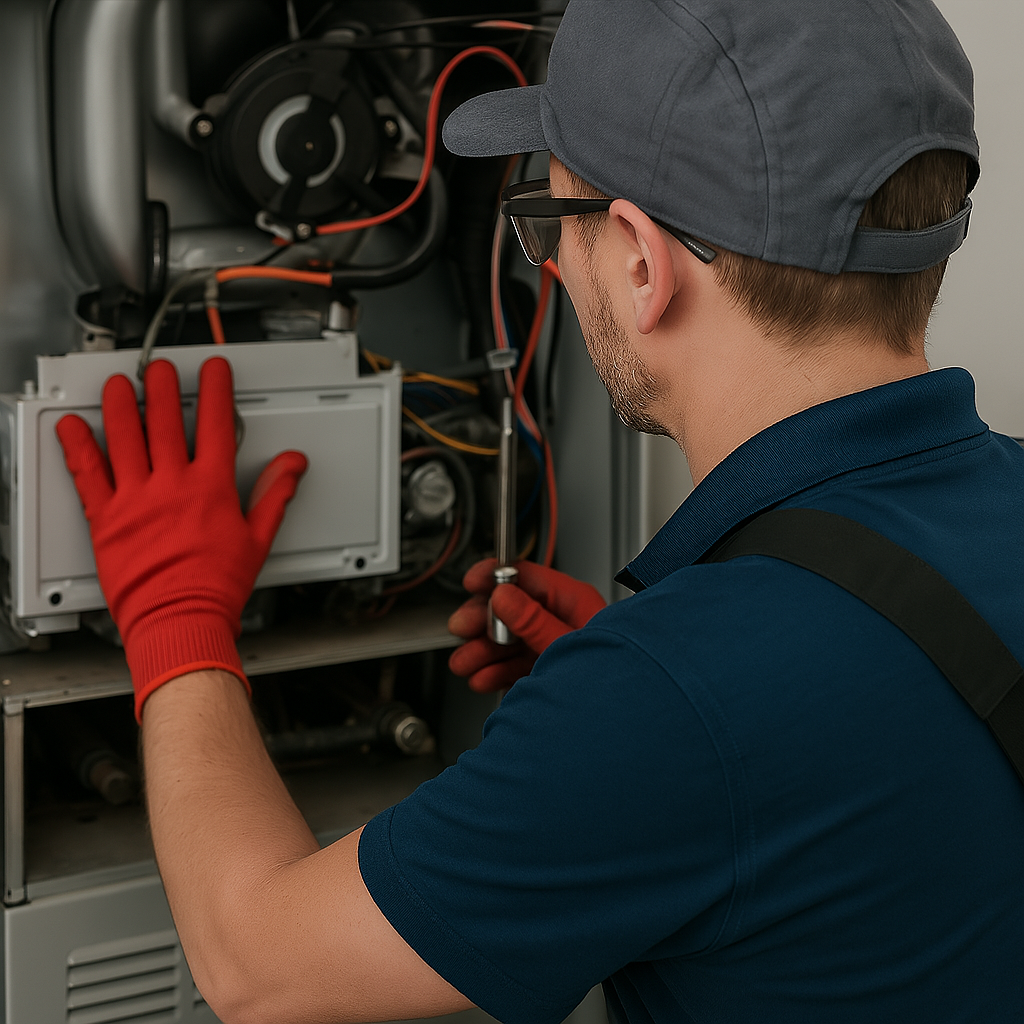
The flame sensor is usually located near the burner assembly in a gas furnace (Source: AZParts)
3. Signs of a Bad Flame Sensor Symptoms in Your Furnace
A dirty, oxidized, or faulty flame sensor can cause various issues during the operation of a gas furnace. Here are some common signs indicating that the flame sensor may be malfunctioning:
- The furnace starts but shuts off after a few seconds (short cycling)
- The furnace won’t start at all, even though you hear the ignition attempt
- Error lights or flame - detection fault codes on the control panel
- Intermittent operation, reduced heating performance, or higher fuel use
If you notice these issues, inspect the location of flame sensor on furnace and check the sensor tip for soot or corrosion - cleaning often restores proper function. If problems persist after cleaning, replacement is usually required
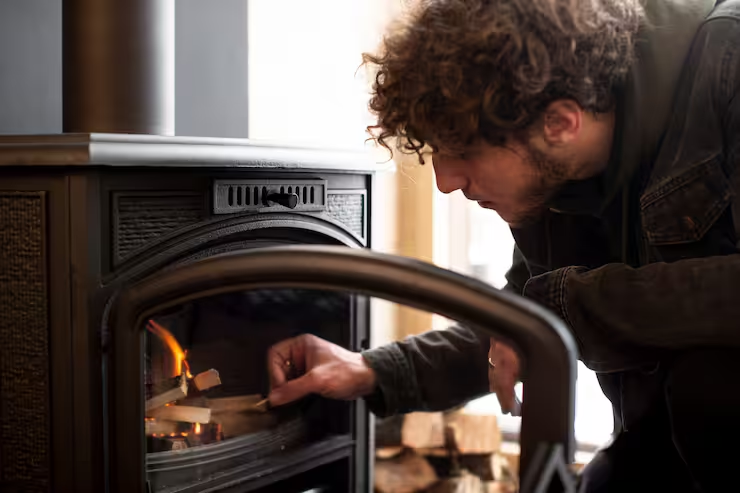
A dirty, oxidized, or faulty flame sensor can cause various issues during the operation of a gas furnace (Source: Freepik)
4. How to Properly Clean a Furnace Flame Sensor
To keep your furnace operating safely and efficiently, regular cleaning of the flame sensor is essential. A dirty or oxidized sensor can cause the furnace to malfunction or shut off unexpectedly. Below are the proper steps to clean the flame sensor that you can follow and perform:
4.1. Cut the power
Before starting to clean the flame sensor, you must ensure complete safety. Turn off the power supply to the furnace entirely and close the gas valve if possible. This precaution helps prevent risks of electrical shock, gas leaks, or fire during the maintenance process.
4.2. Remove the flame sensor
Open the front panel of the furnace to access the burner assembly. The flame sensor is usually a small metal rod located near the ignitor and positioned toward the flame. Use a screwdriver to remove the screws securing the sensor, then gently pull the sensor out of its place. Be careful not to bend or damage this component.
4.3. Clean off debris
Use fine-grit sandpaper (between 180 and 220 grit) or a soft, dry cloth to clean the metal part of the sensor. Gently rub in one direction to remove dust, soot, and oxidation from the surface. Avoid using water, chemicals, or sharp objects, as these can damage the sensor or affect its heat conduction ability.
4.4. Reattach the flame sensor
After cleaning, reinstall the sensor in its original position and securely tighten the screws. Close the furnace panel, restore the power supply, and open the gas valve. Start the furnace and check that it operates steadily without sudden shutoffs or sensor errors. If everything runs smoothly, the cleaning process was successful.
It’s recommended to clean the flame sensor 1 to 2 times per year, especially before the cold season or if you notice unstable furnace operation. If problems persist after cleaning, the sensor may be faulty and require replacement. In that case, you can consider quality flame sensors from AZParts to ensure durability and optimal performance.
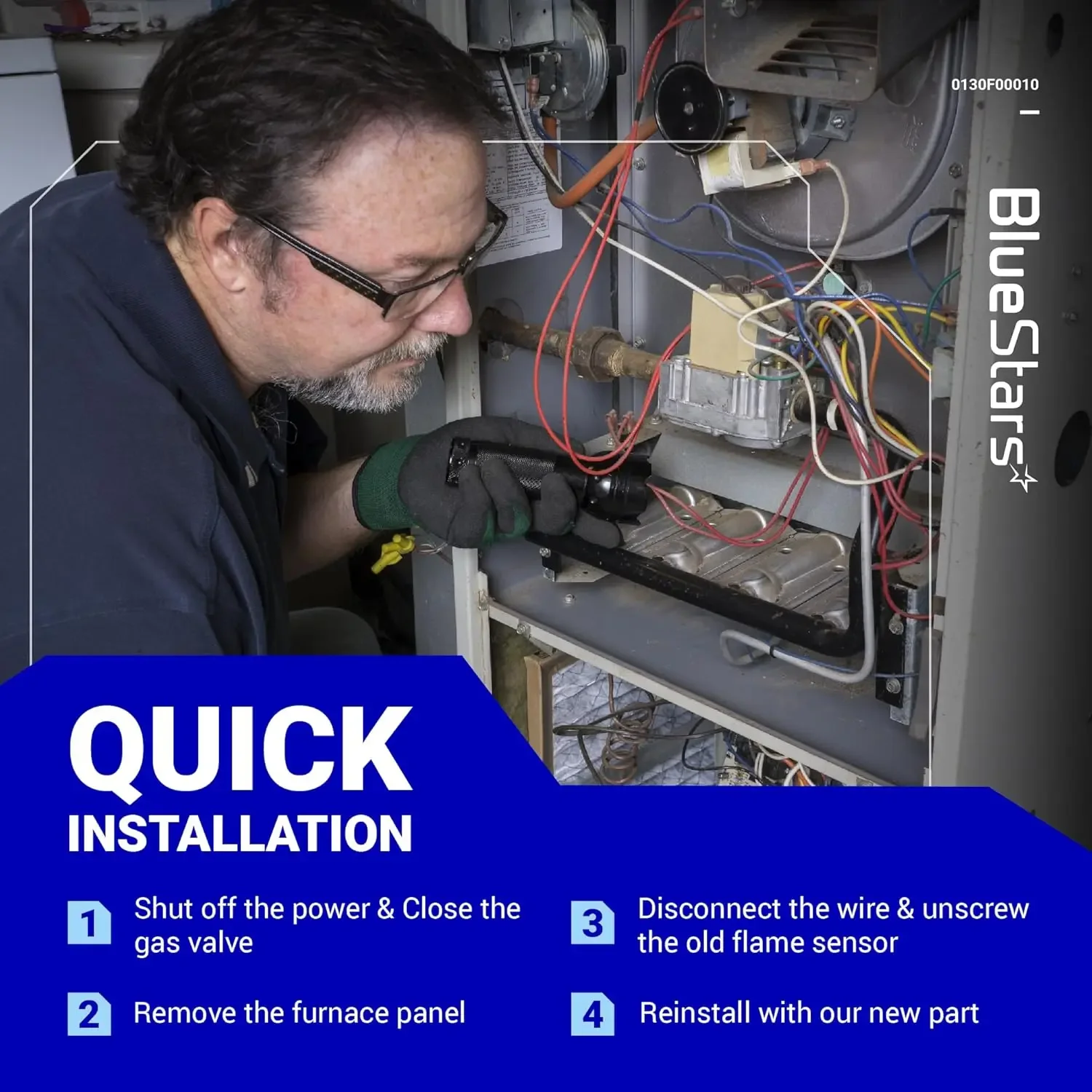
How to Properly Clean a Furnace Flame Sensor (Source: AZParts)
5. What is The Average Lifespan of a Flame Sensor?
The average lifespan of a flame sensor in a furnace typically ranges from 5 to 10 years, depending on its quality, usage conditions, and regular maintenance. Frequent cleaning and operating the furnace in a clean environment can help extend this lifespan. However, buildup of dust, soot, or exposure to moisture can significantly reduce its durability. When the sensor shows signs of poor performance or frequent errors, replacing it promptly is recommended to maintain safe and efficient furnace operation.
Understanding the flame sensor furnace location makes inspection, cleaning, and replacement straightforward , and helps you catch issues before they cause breakdowns. Regular checks and timely cleaning will extend the sensor’s life and keep your heating system running safely. If the sensor is repeatedly failing or older than its expected lifespan, consider a compatible replacement AZParts’ furnace parts to restore reliable operation.
6. Frequently Asked Questions (FAQs)
6.1. How do I know if my flame sensor is bad?
If your furnace turns on but shuts off after a few seconds, or you see error codes related to ignition or flame detection, it’s likely a faulty or dirty flame sensor. Cleaning the sensor often fixes the issue - if not, replacement may be needed.
If your furnace turns on but shuts off after a few seconds, or you see error codes related to ignition or flame detection, it’s likely a faulty or dirty flame sensor. Cleaning the sensor often fixes the issue - if not, replacement may be needed.
6.2. Can I clean the furnace flame sensor myself?
Yes. You can safely clean the flame sensor using fine-grit sandpaper or a soft cloth. Always cut the power and gas supply before doing so. Regular cleaning once or twice a year keeps your furnace running efficiently.
Yes. You can safely clean the flame sensor using fine-grit sandpaper or a soft cloth. Always cut the power and gas supply before doing so. Regular cleaning once or twice a year keeps your furnace running efficiently.
6.3. How much does it cost to replace a flame sensor?
Replacement costs usually range between $20 and $80, depending on the furnace model and brand. You can find affordable and compatible options at AZParts to ensure proper fit and safe operation.
Replacement costs usually range between $20 and $80, depending on the furnace model and brand. You can find affordable and compatible options at AZParts to ensure proper fit and safe operation.
Contact information:
8 The Green, Ste A, Dover, Delaware 19901-3618, United States
Read more:
Furnace
Further Reading
Further Reading

